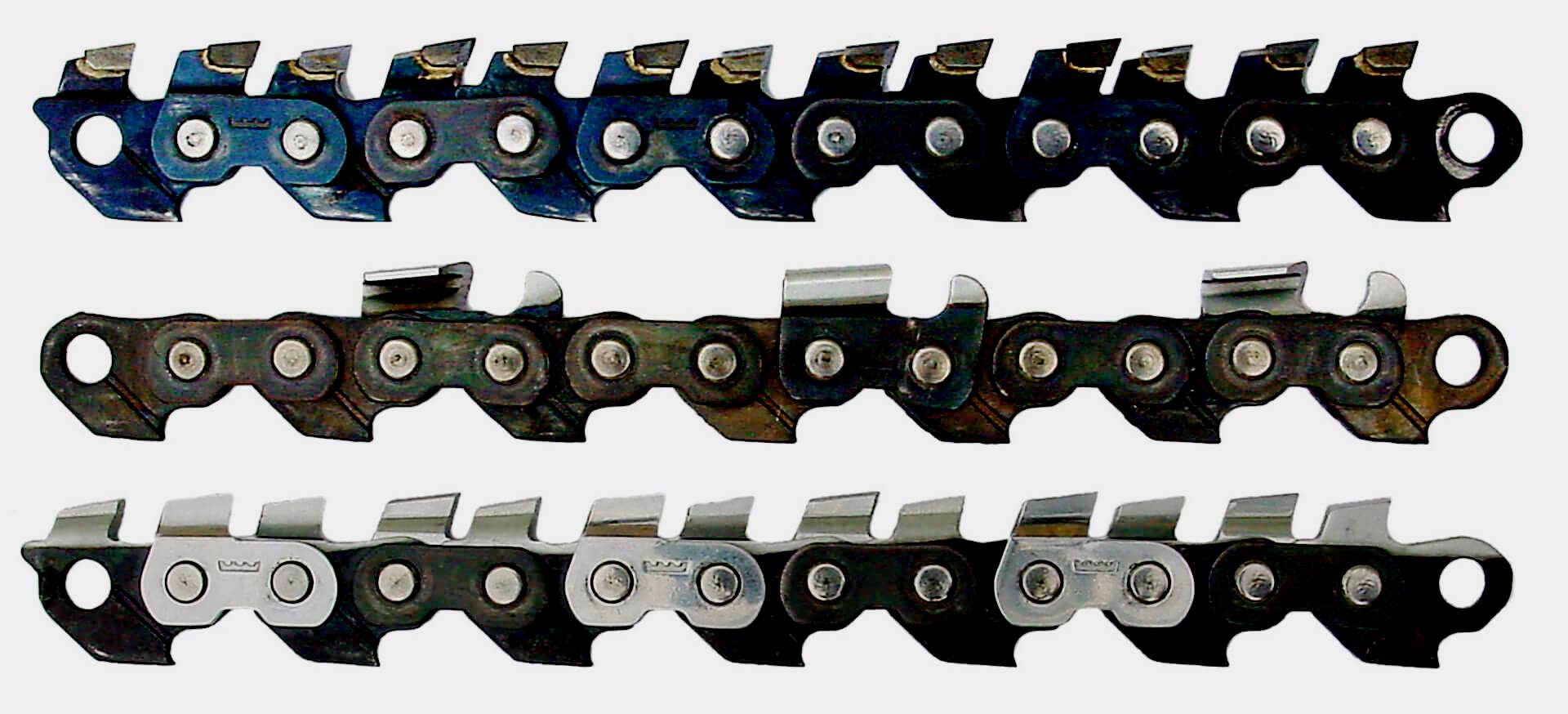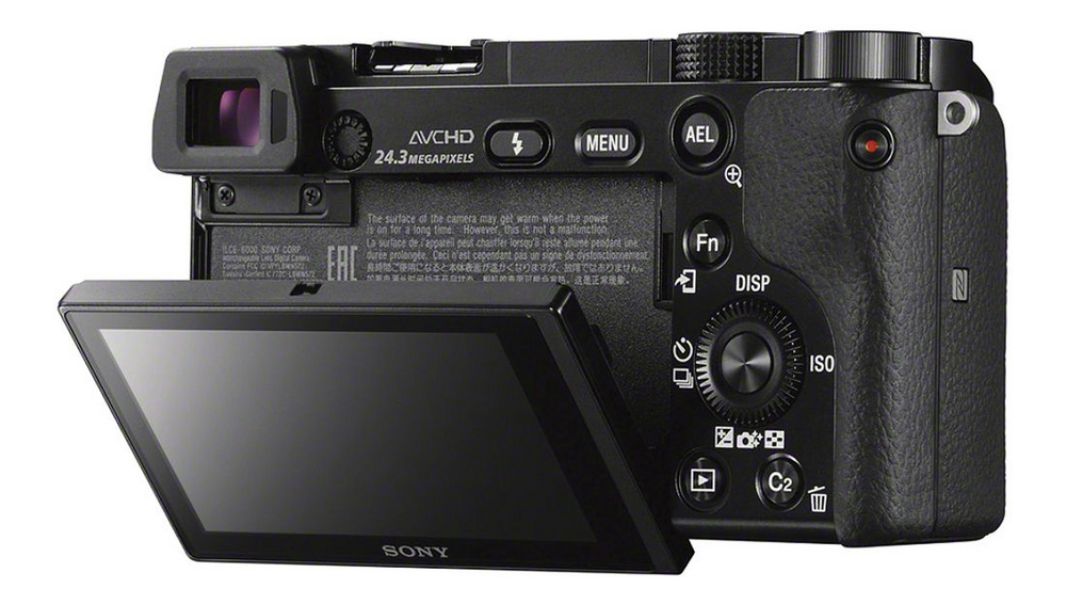Best Sony Camera Lenses 2024

Sony is one of the largest Japanese giant companies that produces first-class appliances and electronics, taking pride of place in the ranking of quality products. In addition to well-known popular models of smartphones, tablets and monitors, the company produces decent cameras not only for amateurs, but also for professionals.
Many beginners get lost in the question of how to choose the right lens for a Sony camera, and which one is better to buy for a particular camera model. There is no definite answer about the best lens, since each option is good and fulfills its function. Therefore, the review will be devoted not only to the usual description of specific models, but also to the analysis of each type of lens, its functionality, so that a novice photographer can choose a product that is suitable in terms of price and quality, that meets his selection criteria.
The ranking of the best lenses for Sony cameras is compiled based on voting and positive user reviews. Before proceeding to the very description and technical characteristics, it is necessary to understand the classification and types of lenses and their manufacturers.
Top lens manufacturers for Sony
The first thing to note is that almost all lenses in the review are equipped with an FE mount (for partial-frame shots) or E, and the A mount (for full-size shots) is not the best-selling one, as it is only suitable for DSLRs used by professionals.

Top 3 Most Suitable Manufacturers:
- Carl Zeiss can be called the best quality lens manufacturer. Despite the fact that the models equipped with their optics cannot be called budgetary in price, the high cost does not affect the popularity. German quality and durability speak for themselves. Since the mid-19th century, the company has only been producing optical glasses, not only for lenses, but also for microscopes, telescopes, and mobile phones.
- Tamron - specializes in the production of photographic equipment, but the main share falls on the production of optics, lenses and special glasses. In addition, a huge number of special accessories are produced for beginners and professionals. Their products can be called inexpensive in comparison with the "Germans". Their accessories are also produced not only for Sony, but also for Canon and Nikon.
- Sony is one of the most common lenses, currently the third largest manufacturer. Few people know, but initially accessories, lenses and optics were produced by the company - Konica Minolta, but at the end of 2005 it was absorbed by the giants from Sony, and now all optics are produced according to their standard and quality.
Specifications
Before choosing a suitable lens for a camera and deciding which company is better to buy, we suggest that you familiarize yourself with the table of summary parameters of the rating products presented below:
| Sony 16-50mm f / 2.8 (SAL-1650) | Sony 50mm f / 1.4 | Tamron SP AF 28-75mm f / 2.8 XR Di LD Aspherical (IF) Minolta A | Sony Carl ZeissVario-Tessar T * 24-70mm f / 4 ZA OSS (SEL2470Z) | Sony 50mm f / 1.8 (SAL50F18) |
|
|---|---|---|---|---|---|
| Classification | standard zoom lens | portrait for mirror | standard zoom lens | standard zoom lens | portrait for mirror |
| Material | plastic | plastic | plastic | plastic | plastic |
| Diameter (mm) | 81 | 43 | 67 | 67 | 49 |
| Dimensions (mm) | 81 x 88 | 65 x 46 | 73 x 92 | 73 x 94 | 70 x 45 |
| Weight (g) | 577 | 220 | 510 | 426 | 170 |
| Focal length (mm) | 16 – 50 | 50 | 28 - 75 | 24 - 70 | 50 |
| Minimum distance (m) | 0.3 | 0.45 | 0.33 | 0.4 | 0.34 |
| Viewing angle (degrees) | 32 - 83 | 32 - 47 | 32 - 75 | 34 - 84 | 32 - 70 |
| Zoom ratio | 3.1x | 1.5x | 2.7x | 2.9x | 1.5x |
| Diaphragm | F2.80 | F1.40 | F2.80 | F4 | F1.80 |
| Average price (rub) | 39 000 | 29 800 | 27 000 | 49 700 | 14 100 |
| Sony FE 85mm f / 1.8 (SEL85F18) | Sony 50mm f / 1.8 OSS (SEL-50F18) | Sony Carl Zeiss Sonnar T * 55mm f / 1.8 ZA (SEL-55F18Z) | Sony 70 - 300mm f / 4.5-5.6G SSM (SAL-70300G) | Sony 75 - 300mm f / 4.5-5.6 |
|
|---|---|---|---|---|---|
| Classification | portrait for mirror | portrait for system | portrait for system | telephoto lens | telephoto lens |
| Material | plastic | plastic | plastic | metal | metal |
| Diameter (mm) | 67 | 49 | 49 | 62 | 55 |
| Dimensions (mm) | 78 x 82 | 62 x 63 | 64.5 x 71 | 82.4 x 135.7 | 71 x 122 |
| Weight (g) | 371 | 203 | 281 | 760 | 460 |
| Focal length (mm) | 85 | 50 | 55 | 70 - 300 | 75 - 300 |
| Minimum distance (m) | 0.8 | 0.39 | 0.41 | 1.2 | 1.5 |
| Viewing angle (degrees) | 41 - 73 | 32 | - | - | 8.2 – 32.0 |
| Zoom ratio | 3.2x | - | - | 4.3x | 4x |
| Diaphragm | F1.80 | F1.80 | F1.80 | F4.50 - F5.60 | F4.50 - F5.60 |
| Average price (rub) | 41 000 | 17 800 | 54 600 | 83 500 | 75 600 |
Best standard lenses
Universal or standard lenses are ideal for first-time photographers and feature 50mm focal lengths. And the viewing angle is 46 degrees, which corresponds to the perception angle of the human eye.
With this lens, you can create a variety of vivid and high-quality images without having a rich experience with the camera. However, the camera's viewing angle depends on the crop factor, so the ideal “fifty kopeck piece” will go to the camera on a cropped matrix.
Standard lenses differ in aperture or aperture. The most inexpensive and compact photo lens with aperture of 1.8f, it is distinguished by its miniature size and light weight. It is the only inexpensive fixed focal length lens. Ideal for night photography.
Versatile 1.4f aperture lens with advanced optical system and ultrasonic drive. The image is high quality even in the complete absence of light.
A professional lens that delivers true macro photography with the fastest aperture of 1.2 f. Despite the bulkier dimensions and considerable weight, a lens with such aperture creates truly stunning images.
Sony 16-50mm f / 2.8 (SAL-1650)
A worthy choice for a beginner, according to buyers and professionals. Usually this model is advised to students and beginners in photography schools. The lens is good in all respects and is ideal for subject and night photography.
A lens with a constant aperture ratio and good optics pleased many with decent stabilization, capable of shooting moving objects that are clearly visible in the picture. The wide angle allows you to capture clear and detailed portraits with beautifully blurred backgrounds. Thanks to optics that hold color well, beautiful sunsets and sunrises can be captured.

The price, of course, is high for a lens of this line, but the functionality and build quality are worth it, since the optics are protected from moisture and dust.
- Constant depth of field;
- Fast autofocus;
- Good build;
- High quality.
- Dimensions;
- High price.
Tamron SP AF 28-75mm f / 2.8 XR Di LD Aspherical (IF) Minolta A
Ideal lens for close-up photography, capable of capturing a small subject at 1: 1 scale. In addition to macro, it perfectly creates detailed portraits with a blurred background. Also, with its help, you can easily catch a face in a crowd, thanks to autofocus.

The main requirement for good macro photography is detail and maximum image sharpness.
- Wide range of depth of field;
- Manual focusing;
- Multifunctionality;
- Stabilization;
- Good price;
- Low weight.
- Slow focus and noise.
Sony Carl ZeissVario-Tessar T * 24-70mm f / 4 ZA OSS (SEL2470Z)
The Germans offer a truly stunning and functional lens with a perfect build and high moisture protection. But the main disadvantage is the price. Not everyone can afford such a lens, and not all beginners and amateurs will not be able to appreciate what this wonderful lens is capable of.

The shots are perfect, even with no light at all. Variable framing lets you add a fish-eye effect to your photos.
- Reactive focusing;
- Decent sharpness and color reproduction;
- Metal body;
- Dust and moisture protection;
- Low chromatic aberration.
- Huge weight;
- High price.
DSLR portrait lens
Many people confuse standard zoom lenses with portrait lenses that have a fixed focal length. The colossal difference is that it is impossible to zoom out or zoom in on the subject. But due to the prime lens, you can get perfect photos with good focus, aperture and a complete lack of distortion.
Lenses of this type are suitable for amateurs and novice photographers, not only because of the affordable price, but also because of the high-quality images and the specifics of optics, which are similar in perception to the human eye.
The best models of fixed focus portrait lenses are listed below.
Sony 50mm f / 1.4 lens
A decent lens at an affordable price - that's what we can say about this model. It allows you to create fairly sharp and detailed shots. The wide opening aperture contributes to a very high aperture, which allows photography in low light. Also, do not forget about good stabilization.

The only drawback is the plastic case and the lack of dust protection. Almost all inexpensive lenses suffer from these drawbacks, but nevertheless this fact does not affect the quality of portrait photography.
- Affordable price;
- High aperture and sharpness;
- Compact size and light weight.
- Noisy motor;
- Plastic case.
Sony 50mm f / 1.8 (SAL50F18)
A decent lens at an affordable price - that's what we can say about this model. It allows you to create fairly sharp and detailed shots. The wide opening aperture contributes to a very high aperture, which allows photography in low light. Also, do not forget about good stabilization.
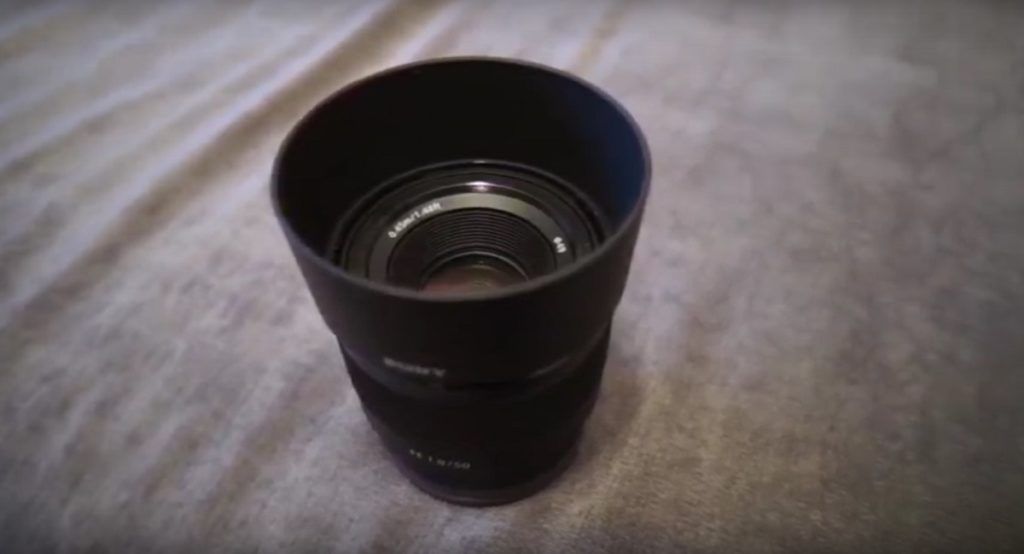
The only drawback is the plastic case and the lack of dust protection. Almost all inexpensive lenses suffer from these disadvantages, however, this fact does not affect the quality of portrait photography.
- Affordable price;
- High aperture and sharpness;
- Compact size and light weight.
- Noisy motor;
- Plastic case.
Sony FE 85mm f / 1.8 (SEL85F18)
Ideal for discerning photographers looking for wide-range portrait lenses without compromising on quality. The standard focal length range, aperture ratio and maximum distance just allow you to create three-dimensional portraits without loss of quality, noise and distortion.
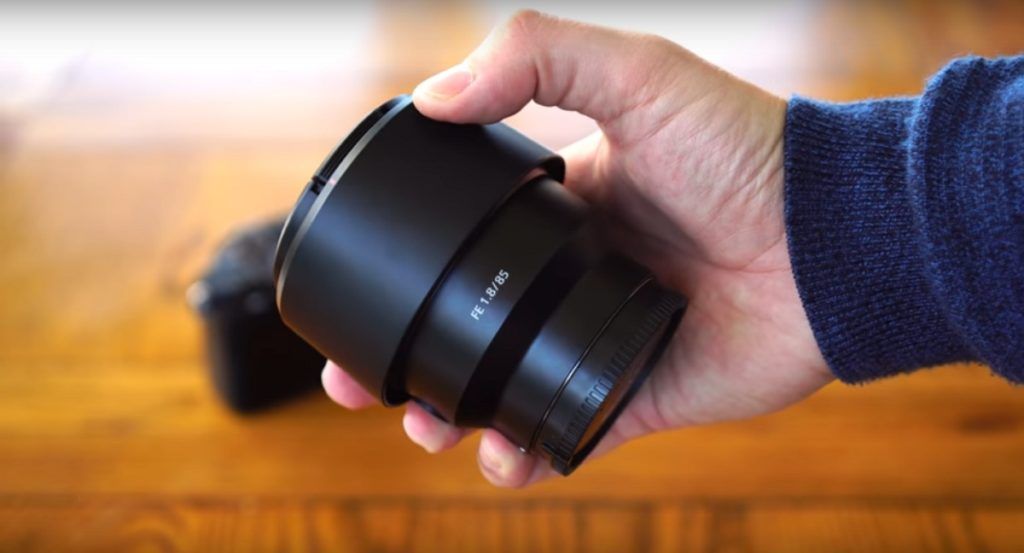
In addition to volumetric portraits, the lens allows you to create beautiful bokeh, bright pictures in the complete absence of light.
- Low cost;
- Lack of distortion;
- Good luminosity;
- Medium size.
- Fragile body.
Portrait lens for system camera
Many consider this type of lens to be more versatile and convenient for amateurs and beginners. Since they are sharpened not only for portraits, but also for subject shooting and landscapes.
Variable focus lets you play with perspective, light and distance, allowing you to create extraordinary shots and experiment. However, be aware that virtually all variable zoom cameras are not capable of capturing such high-quality images as cameras with constant zoom.
Sony 50mm f / 1.8 OSS (SEL-50F18)
A good find for the owner of a non-SLR camera. For a low price, the manufacturer offers good build quality, powerful optical stabilizer, and bleached lenses.
Cameras with such a lens are superior in build and shooting quality to many DSLRs. Super-optics allows you to get truly sharp shots. Also, a fairly wide aperture will allow you to create vivid images in low light.
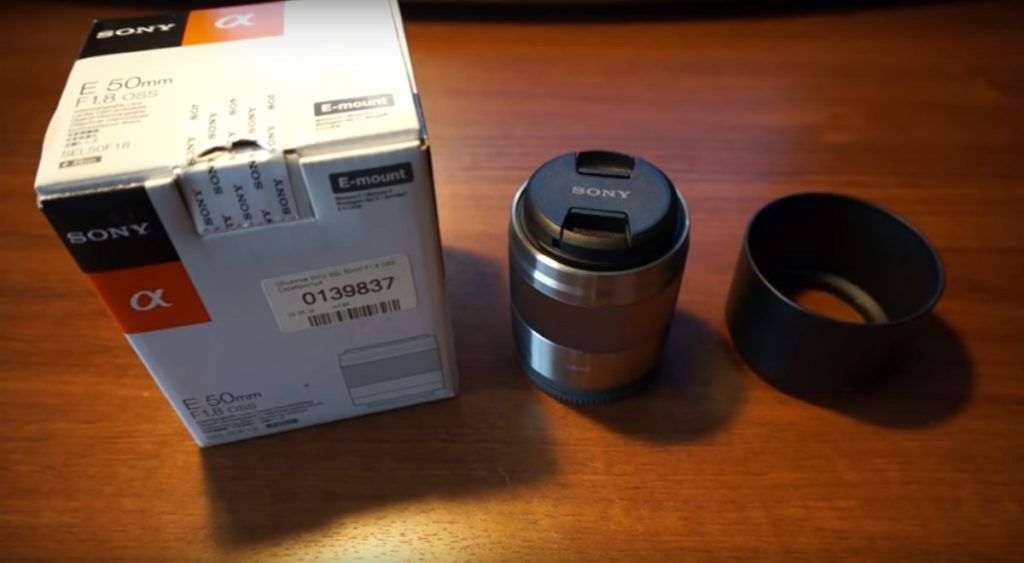
The only drawback is the lack of a focus scale, but this drawback is quite insignificant for lovers of autofocusing.
- High-quality assembly;
- Low price;
- Medium size;
- Precise autofocus;
- Optical stabilization.
- No focus scale.
Sony Carl Zeiss Sonnar T * 55mm f / 1.8 ZA (SEL-55F18Z)
A lens with a rather non-standard focal length. But this does not prevent him from creating bright and sharp pictures. In addition, the model boasts a fairly wide aperture and few lenses. In addition to being juicy and sharp, the lens can blur bokeh beautifully. There is no distortion, distortion and glare in the photo.
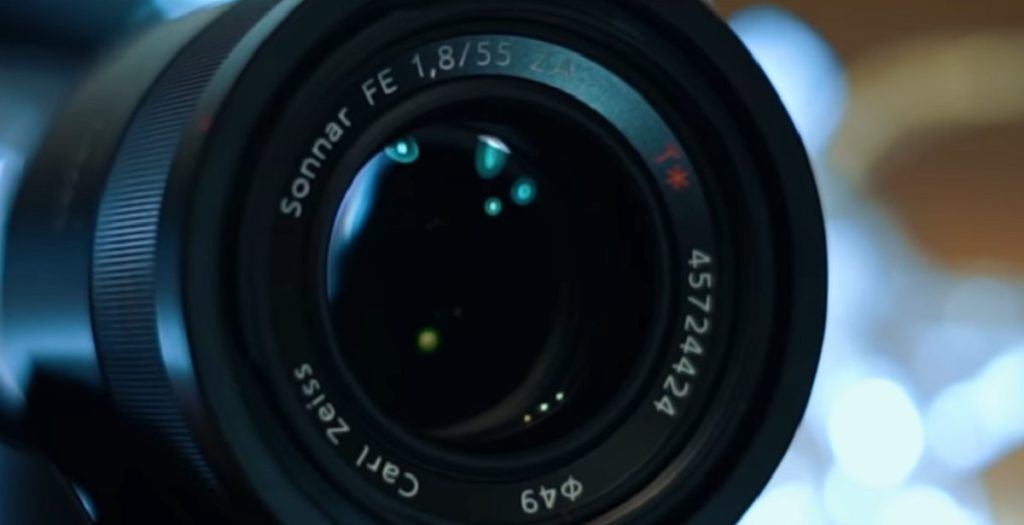
The lenses work well with backlighting. The only drawback is the lack of a stabilizer, but thanks to such optics, it is enough just to make the shutter speed faster and the frames will turn out to be smeared.
- Value for money;
- High-quality assembly;
- Lenses and optics;
- Good sharpness and aperture.
- Lack of stabilization.
Best telephoto lens
A telephoto lens is a sophisticated optics system, the focal length of which can reach from 150 to 600 mm. What is the complexity of optics? The fact is that, despite the same principle of operation of the lens, as in telescopes, microscopes, the essence of which is to magnify or approach an object, a person himself focuses his eyes on a particular object. But with the lens, everything is more difficult, since it has to be manually focused to avoid blurring the picture.
Manual focusing of the photo lens has to be done using such complex elements as special motors. They are difficult to manufacture, plus, it is necessary to specifically build in the lens system for correct approximation. Therefore, such lenses are expensive, bulky and heavy. Suitable for experienced photographers who know how to properly set up the camera, otherwise the pictures will be blurry, dirty and with distortion.
Varifocal lenses are widely available commercially, as fixes are extremely difficult to work with. They have to be constantly adjusted, and it will not work normally to photograph a moving object. And it is not always possible to approach or move away from the object. However, fixed focus photo lenses can still be found commercially.
One of the main features of a telephoto lens is a long focal length, the larger the focus, the smaller the angle of view. Therefore, wide-angle telephoto lenses do not exist. Due to the complexity of the assembly and the specifics of the design, it is difficult to find a camera with a high aperture ratio, especially if the focus is variable. Therefore, some photographers choose fixes, as among them you can find a lens with aperture - f / 2. But in principle, with good lighting and such optics, there should be no problems with photographs. Below are two of the best telephoto lenses in the opinion of photographers.
Sony 70 - 300mm f / 4.5-5.6G SSM (SAL-70300G)
The model is endowed with high-quality magnifying optics that are protected from dust and moisture. The photographer is not afraid of either wind or rain. The lens, according to many users, has nearly perfect focus coverage. The only drawback, as mentioned, is the small viewing angle. But, when shooting distant objects, its value is not critical, since the lens itself focuses on a specific object. In addition, the abandonment of the wide-angle has reduced the volume, dimensions and weight of this model.

The second minus is not a wide aperture and a weak aperture. This lens is hardly suitable for sophisticated professionals, since it can create good and high-quality images only in good lighting. But for amateurs and less demanding pros, this model will suit due to the simplified design.
- Light weight for a telephoto;
- Not bulky and easy to carry;
- The interior is completely protected from moisture and dust;
- "Quiet" autofocus;
- Weak aperture;
- Plastic housing.
Sony 75 - 300mm f / 4.5-5.6
This model is able to zoom in 7 times the object without losing the quality of the photo. The photographed subject will not lose its brightness and color saturation, and the background will acquire professional blur.The viewing angle is slightly larger than the previous model, plus good stabilization.

The bulky size, weight and weak aperture spoil the picture a little. But due to stabilization and autofocus, problems with shooting in twilight should not arise. In extreme cases, there is a special manual setting.
Due to its simple design, fully automated system and a simple menu of options, the model can be suitable for a novice photographer. But you should be aware that you cannot get perfect pictures in the absence of light.
- Ease of management;
- Suitable even for beginners;
- Good price;
- Creates rich and vibrant images;
- No distortion and smearing in good lighting conditions;
- There are manual configuration functions;
- Adheres tightly to the thread;
- Protection against moisture and dust;
- Fast autofocus.
- Small aperture;
- Large weight and dimensions.
Tips for choosing a lens
Difficulties in choosing the right lens model are experienced not only by beginners, but also by more advanced photographers. Since the market offers a considerable number of new and advanced models, it is very difficult to understand and find exactly the one that is needed. A few tips will help you avoid the most common and common mistakes when choosing.
The first, although for many an obvious rule, is that both the lens and the camera must be of high quality. Some people truly believe that the camera is more important than the lens. This is not true. It is also difficult to agree that the lens model is more important than the camera itself. Both parts of the camera are important. And the type of lens and its characteristics fulfill a specific function. As with a weak camera and a good photo lens, it is difficult to achieve good images, so with a good camera coupled with a low-quality or incorrectly selected lens model, decent pictures will not work.

Brand lenses, despite the high price tag, are mostly of high quality, because any well-known company values its reputation. Of course, there are also a lot of decent models of little-known manufacturers, but there is a possibility of getting caught on a low-quality product. There are two options: to fork out for a model from a well-known manufacturer, or ask more experienced photographers for a budget brand.
And the last, main point is the question: how much does a good and high-quality lens for a camera cost? As mentioned in the previous paragraph, the more famous and popular the brand, the higher the price. But if we talk about new and little-known brands, then the average price should not be lower than 10,000 rubles, and for a TV set not lower than 40,000-50,000.
This concludes the review smoothly. The types, types and functions of lenses were described in detail: from universal to telescopic. The rating of the best models is also collected, grouped by the number of positive reviews from experienced photographers.

For beginners, some basic tips were given: what to look for when choosing the right lens. There are many different models, but it will not be difficult to find a more suitable one among them.
new entries
Categories
Useful
Popular articles
-

Top rating of the best and inexpensive scooters up to 50 cubic meters in 2024
Views: 97661 -

Rating of the best materials for noise insulation for an apartment in 2024
Views: 95022 -

Rating of cheap analogues of expensive medicines for flu and colds for 2024
Views: 91750 -

The best men's running shoes in 2024
Views: 87680 -

Top ranking of the best smartwatches 2024 - price-quality
Views: 85091 -

Best Complex Vitamins in 2024
Views: 84801 -

The best dye for gray hair - 2024 top ranking
Views: 82406 -

Rating of the best wood paints for interior use in 2024
Views: 77202 -

Ranking of the best action cameras from China in 2024
Views: 75269 -

Rating of the best spinning reels in 2024
Views: 74827 -

The most effective calcium supplements for adults and children in 2024
Views: 72462 -

Top rating of the best in 2024 means for male potency with a description
Views: 68296
